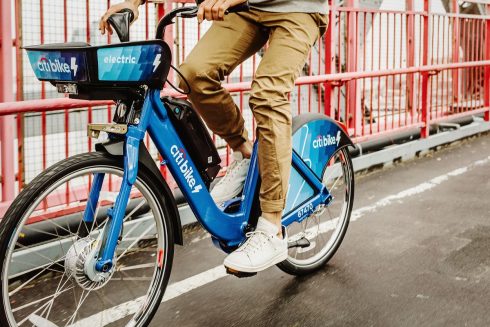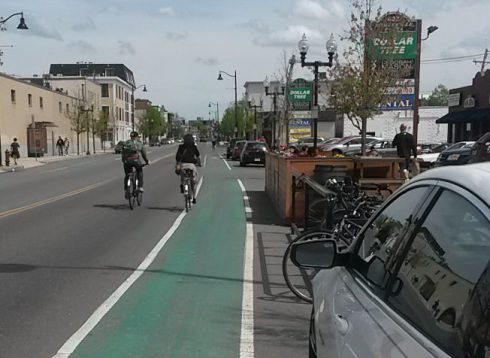A major revision of Massachusetts traffic law has been overdue for decades. It is the most disorganized and unreadable body of traffic law of any state and the only one not based on the Uniform Vehicle Code. In preparing comments on bills currently before the Massachusetts state legislature, I was able to deepen my understanding of how this came about, and how it works, or doesn’t. So, now, I’ll share what I discovered with you.
I’ve long known there to be major gaps in the rules for driving in the General Laws, but now I have a better understanding. The main body of rules for driving is not in the laws at all. It elsewhere, actually in very many places elsewhere, as I found out. Massachusetts statutes consist of a skeleton of antiquated traffic law overlaid with a patchwork of fix-up provisions, and with huge gaps where the main body of rules should be.
Chapter 89, section 3 of the Massachusetts General Laws, dating from 1821, requires a horse pulling a sleigh to be equipped with three or more bells. Please keep that in mind, all you people driving horsedrawn sleighs on the roads of Massachusetts, but be warned, the going isn’t very good for a sleigh, because the roads are now plowed. The bill enacting the sleigh bell provision is the first in my summary here. The 1821 legislation also established that traffic should keep to the right, everywhere in Massachusetts. So far, so good with that.
But as to rules for driving on modern roads, there are huge gaps in the General Laws. For example, there is no provision indicating what a driver is to do at a traffic signal other than the fix-up rule for a legal turn on red, see Chapter 89, section 8 – https://malegislature.gov/Laws/GeneralLaws/PartI/TitleXIV/Chapter89/Section8. If you search the entire body of statutes, you won’t find any underlying rule. The “turn on red” rule was added in 1980,when it was mandated by the Federal Government, under the threat of withholding highway funding — see history here.
Chapter 90, Section 7B is another fix-up example. It describes requirements for and around school buses in a paragraph 1523 words long – and this is a section which S7, the Governor’s bill currently in the Legislature, would revise. The revision would be lost in a mass of text:
https://malegislature.gov/Laws/GeneralLaws/PartI/TitleXIV/Chapter90/Section7B
Where is the main body of traffic law?
Let’s take a closer look at the questions about traffic signals, to discover how the rules are split up between the General Laws, regulations and municipal ordinances:
There are explicit rules for drivers at traffic signals in Chapter 720 of the Code of Massachusetts Regulations, 9.06 (10) – https://www.mass.gov/doc/720-cmr-9-driving-on-state-highways/download but these apply only on state highways. And, whether a numbered highway is a state highway depends on property rights. That is the reason for the signs, “state highway ends.” Not only the jurisdiction changes where these signs are posted: also the rules.
Code of Massachusetts Regulations 350 includes traffic rules, including an abbreviated one for traffic signals, for DCR parkways: https://www.mass.gov/doc/350-cmr-4-traffic-rules/download . There are probably similar rules for authorities such as Massport.
So, where are the rules that apply on streets and roads which are not state highways, or DCR parkways, or managed by authorities?
Basic traffic rules elsewhere are established in ordinances that must be enacted separately by the governments of the 351 cities and towns. Ordinances for Waltham, where I live, include wording on traffic signals similar but not identical to that in CMR 9.09 (10).
https://www.city.waltham.ma.us/sites/walthamma/files/pages/rules_-_regulations_2017.pdf –
I do not have time to review the ordinances of the other 350 cities and towns.
Another example: There is a very good definition of “bicycle” in the rules for state highways, CMR 720 9.01. There is no definition of “bicycle” whatever in the General Laws. There is a poor and different definition in the Waltham city ordinances.
This is nuts.
My friend Paul Schimek reports in a comment on a Facebook post, that
Technically, rules … are supposed to conform with the state’s model municipal traffic code, but no one seems to enforce this:
“any rule, regulation, order, ordinance or by-law of a city or town hereafter made or promulgated relative to or in connection with the erection or maintenance of signs, traffic control signals, traffic devices, school zones, parking meters or markings on any way within its control shall take effect without department approval provided such signs, traffic control signals, traffic devices, parking meters, school zones or markings are in conformance with the department’s current manual on uniform traffic control devices and the department’s sample regulation for a standard municipal traffic code.”
https://malegislature.gov/…/TitleXIV/Chapter85/Section2Ch. 85 Sec. 2 lists some important things (at least important according to MassDOT) that require prior approval, but everything else must conform but there is no pre-approval required, and in practice there are a TON of non-conforming local laws, including the meaning of traffic signals!
Chapter 85, section 2 is another huge block of text, too.
I couldn’t find the municipal traffic code online with a Google search. I asked Paul, and he pointed me to the appendices of the Massachusetts Amendments to the Manual of Uniform Traffic Control Devices. Quote from the host page for that PDF document:
The standards in this manual apply to any and all streets and highways regardless of type or class.
MassDOT will assist municipalities regarding the proper use of the MUTCD and the Massachusetts Amendments, upon request.
A driver or police officer should not have to review multiple documents for rules which apply to something as common and universal as traffic signals or the definition of a bicycle. Traffic laws should be uniform throughout the Commonwealth and addressed comprehensively in the General Laws. Municipal traffic ordinances should address only issues which are unique to a community, an authority or the DCR, such as parking locations and path usage.
Revision of the traffic law to accommodate new developments will be much smoother if the laws are properly organized in the first place. Micromobility devices raise new issues, and more issues are going to occur with the advent of automated crash avoidance and fully autonomous vehicles.
The process of revision begins, or at least could be seeded, by a provision in Section 31 of the Governor’s bill, S7. S7 promises to generate a review process – even though only temporarily and for a limited scope of review.
Also: here’s a link to excerpts from a letter from Ed Kearney, of the National Committee for Uniform Traffic Laws and Ordinances, describing issues he had with Massachusetts law back in 1983. Not much basic has changed. I am not sure whether Kearney was aware of the rules in the city and town ordinances. He did not mention them. It appears that he was confused, and he was a traffic-law guru!




